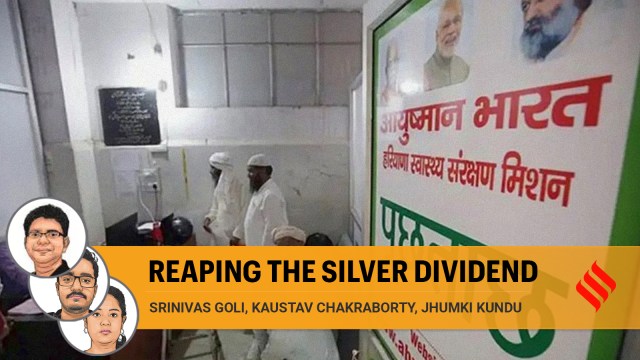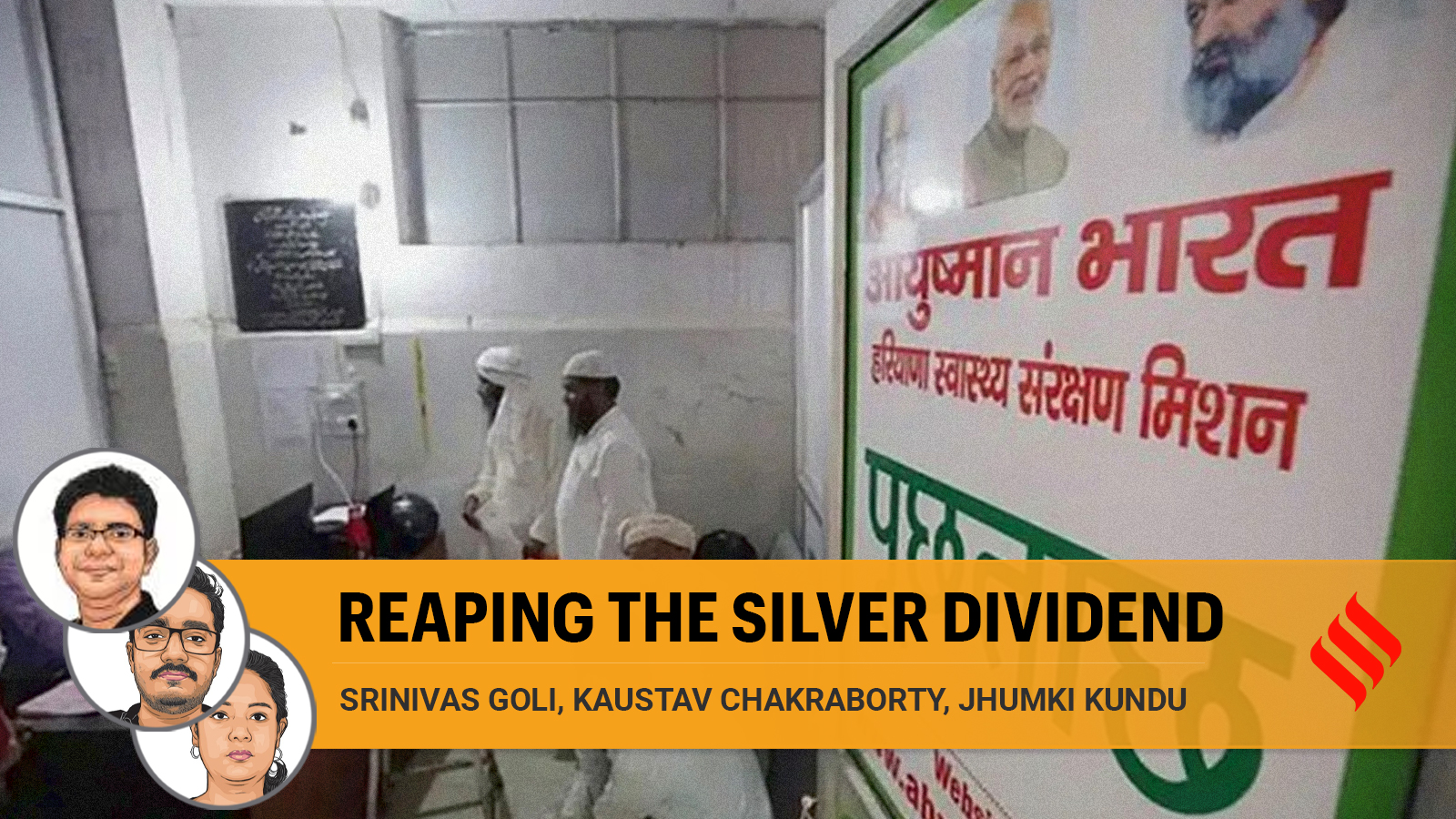
The Centre’s decision, last week, to extend the Ayushman Bharat Pradhan Mantri Jan Arogya Yojana (AB-PMJAY) with a Rs 5 lakh top-up for all older adults aged above 70 years, not covered by other public health insurance schemes, is a step in the right direction. However, it’s not a game-changer. The government claims that the move will benefit about 4.5 crore families. We have tried to analyse how far the proposed scheme goes in protecting households from impoverishment caused by catastrophic healthcare expenditures (CHE) and how many will benefit from it. We have also tried to calculate the annual budgetary requirements for hospitalisation for all intended beneficiaries and lay out a roadmap to promote healthy ageing.
India is not only the world’s most populous country but also among the fastest ageing. Although the country’s life expectancy is 70 years, the healthy life years are only 63.5. Surveys and studies have provided evidence of increasing burden of non-communicable diseases, disabilities and a bedridden older population, especially in the 70-80 and 80-plus age age group. High-risk pooling mechanisms and heavy premiums in private health insurance companies, especially for the older population, are major hindrances in healthcare coverage. In India, only one in five persons above 60 years is covered by health insurance. With nearly 92 per cent of the workforce engaged in informal labour, the financial burden caused by poor health is often devastating. Recent evidence shows that nearly half of the Indian households seeking hospitalisation or outpatient care encounter CHE, leading to impoverishment for 15 per cent of such households. Out-of-pocket (OOP) healthcare spending for inpatient care is twice as high for the elderly compared to the younger population. However, the country’s social security system for older adults is inadequate. The government’s decision to extend the flagship health insurance scheme to older adults will, therefore, help financially stressed people. The move will provide much-needed support for the elderly in times of increasing nucleation of families, rising economic dependency and care poverty.
The question, though, is the move sufficient to ensure healthy ageing.
The government has allocated an additional budget of Rs 3,437 crore for AB-PMJAY to cover the proposed extension. National and state-wise preliminary estimates, however, show the need for a greater increase in funds to cover the intended beneficiaries’ health care. Our estimates using the projected population from the Office of Registrar General of India show that 5.6 crore households would be eligible for the scheme. After adjusting to hospitalisation rates, derived from the Longitudinal Ageing Survey of India (LASI), and deducting the number of individuals covered by employer-based public health insurance schemes, the expected users per year account for 43.5 lakh families. Our calculation shows that if all of them become beneficiaries under the scheme, with an average cost of Rs 32,804 for hospitalisation in a year (derived from LASI), the scheme will cost Rs 14,282 crore. In other words, the amount allocated for the scheme is more than four times less than what is required to implement it effectively.
Protecting vulnerable older adults through public insurance should be complementary to, but not a substitute for, government hospital care. The disease profile of the hospitalised elderly — dominated by ailments such as diabetes, cardiovascular, respiratory and gastrointestinal diseases, cancer, vector borne diseases, injuries — indicates that the majority of illnesses are not likely to be cured in a single episode of treatment. They will require long-term care. The AB-PMJAY, like most other private insurance schemes, covers only secondary and tertiary care conditions, when outpatient services account for 46 per cent of the total health expenditure. The exclusion of outpatient care from the scheme will not help in preventive care, critical for healthy ageing. In its current form, the scheme also does not help with palliative care, a common requirement for the 80 plus group or the bid-ridden amongst the relatively younger group of the elderly who suffer from chronic diseases.
Non-communicable diseases that require multiple consultations with healthcare providers have increased steadily in recent years. Outpatient care contributes to much-needed preventive care. With improved primary and secondary (preventive) healthcare, a considerable amount of pressure can be lifted from the already burdened tertiary healthcare (curative or palliative care) sector.
Extending the beneficiary base of the AB-PMJAY will not be enough to achieve the public health goals of the country without a substantial rise in public health spending. Public healthcare spending has been stagnant at around 0.9 to 1.35 per cent of the GDP for more than seven decades. The expansion of insurance coverage needs to be supplemented with expansion of public health infrastructure and hospital coverage and increase in healthcare human resources and medicine supply. India’s healthcare system needs more holistic reforms that integrate primary and tertiary care support, especially for the ageing population whose health issues often demand continuous attention. Countries with better health outcomes and medical care systems view health as a human capital and healthcare as public service — the Canadian, European, and Australian models are good examples. India, in contrast, is poised to follow less-effective systems such as those in the US. Depending on insurance-based schemes can inflate the cost of the healthcare system as a whole.
In its current shape, with the latest extension, AB-PMJAY is a crucial intervention to avoid impoverishment caused by catastrophic health spending. But it is inadequate to ensure the well-being of the ageing. In the coming decades, the demographic transition will not only alter the age structure and disease profile of the population, but also disrupt the labour market structure, migration patterns and social security policies in states where the population will age relatively faster. Promoting healthy and active ageing is non-negotiable to reap the “silver dividend” or the direct and indirect economic and non-economic contributions made by the older population.
Goli is associate professor, Chakraborty is research assistant and Kundu is a PhD scholar at the International Institute for Population Sciences, Mumbai



